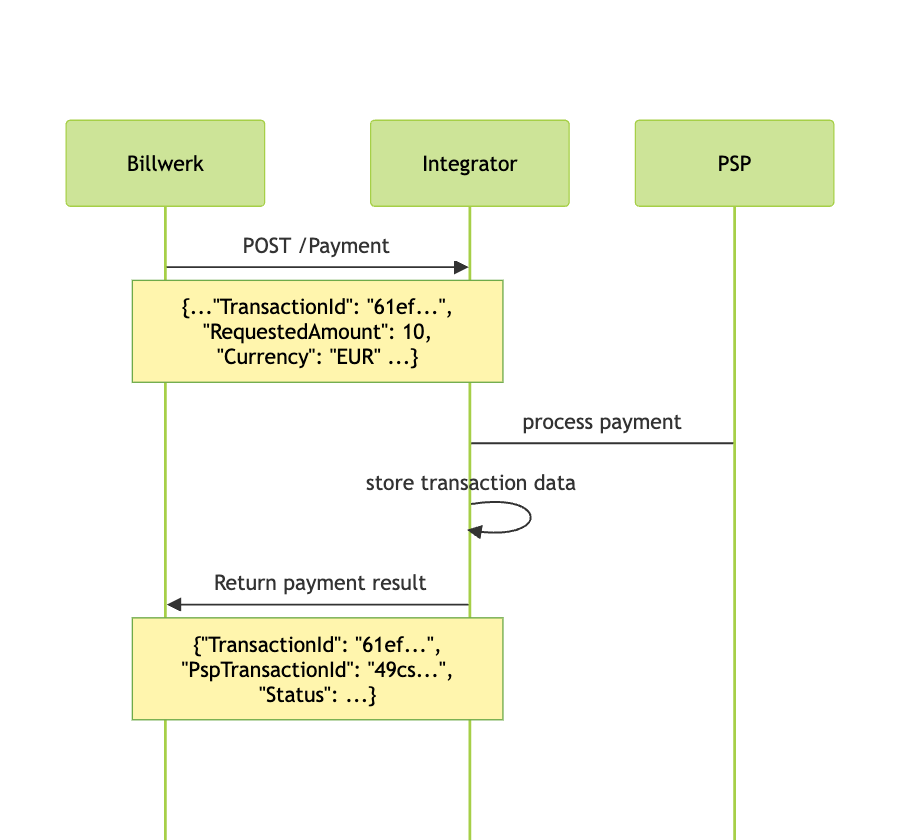Payment Flow
The Payment Flow in Billwerk+ Transform involves two primary processes: Capture and Recurring Payment. Each of these processes utilizes similar endpoints but differs in context and specific data requirements. Below is an overview of each flow, including diagrams and a description of the operations involved.
Capture Payment Flow
The Capture request is initiated by Billwerk as the first payment call following a successful preauthorization. The Integrator processes this capture with the PSP, stores transaction data, and sends back a representation of the current state of the payment created as a result of it.
General Capture Flow Diagram

Process Description
- Initiation: Billwerk initiates the capture by sending a POST request that includes the Preauth identifier. This identifier, generated during the preauthorization phase and sent to the Integrator, helps distinguish between capture and recurring payment flows.
- Processing by Integrator: Upon receiving the capture request, the Integrator processes the payment with the PSP and stores transaction data from both Billwerk and PSP sides.
- Response: The Integrator sends back to Billwerk the current state of the payment, indicating whether the capture was successful, along with other relevant transaction details.
Recurring Payment Flow
Recurring payments are also initiated by Billwerk. The processing pipeline is identical to the capture payment flow, except it does not include a Preauth identifier in the request from Billwerk's side.
Recurring Payment Flow Diagram

Process Description
- Initiation: Billwerk+ Transform sends a POST request for a recurring payment that includes a unique Payment identifier and the necessary payment data.
- Processing by Integrator: The Integrator processes the payment with the PSP, stores the transaction data, and keeps track of the transaction identifier generated by Billwerk+ Transform.
- Response: A response is sent back to Billwerk+ Transform, detailing the transaction's outcome and the payment's current state.
Updated 8 months ago
